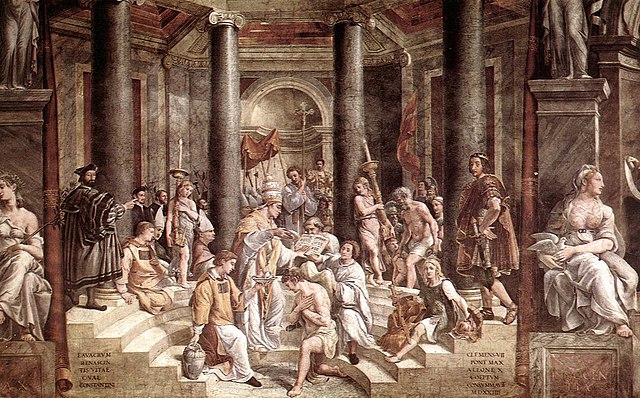The Mortara case was an Italian cause célèbre that captured the attention of much of Europe and North America in the 1850s and 1860s. It concerned the Papal States' seizure of a six-year-old boy named Edgardo Mortara from his Jewish family in Bologna, on the basis of a former servant's testimony that she had administered an emergency baptism to the boy when he fell ill as an infant. Mortara grew up as a Catholic under the protection of Pope Pius IX, who refused his parents' desperate pleas for his return. Mortara eventually became a priest. The domestic and international outrage against the Pontifical State's actions contributed to its downfall amid the unification of Italy.
The Kidnapping of Edgardo Mortara, painting by Moritz Daniel Oppenheim, 1862. This representation departs significantly from the historical record of how Mortara was taken – no clergy were present, for example.
Pope Pius IX (r. 1846–1878), depicted in Harper's Weekly in 1867
The Basilica of San Domenico in Bologna, photographed in 2006
Giacomo Antonelli, the Pope's head of government as Cardinal Secretary of State
An emergency baptism is a baptism administered to a person in immediate danger of death. This can be a person of any age, but is often used in reference to the baptism of a newborn infant. The baptism can be performed by a person not normally authorized to administer the sacraments.
Emergency baptism of an infant in Finland, 1920
Constantine the Great underwent a baptism while terminally ill, depicted in this 1524 painting by Raphael.
A syringe for emergency baptisms, c. 1800, Germany







